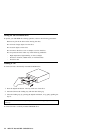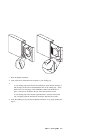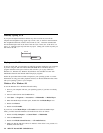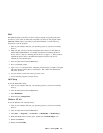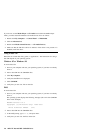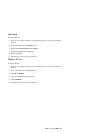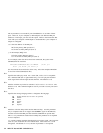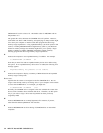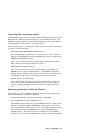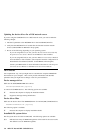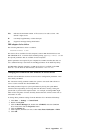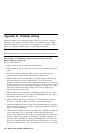The /P parameter is not needed if your CD-ROM drive is on either of these
ports. However, if your computer (or IDE adapter) uses different IDE port
addresses or interrupts, you must use this option. Refer to the instructions that
come with your computer or IDE adapter to understand how your computer or
adapter is configured.
xxx is the base address of the IDE port.
1F0 for the primary IDE port (Port 1)
170 for the secondary IDE port (Port 2)
yy is the interrupt (IRQ) level.
14 for the primary IDE port (Port 1)
15 or 10 for the secondary IDE port (Port 2)
As an example, when four drives have been connected, the syntax in the
CONFIG.SYS file would be:
DEVICE=C:IBMIDECD.SYS /D:IBMCD1 /P:1F ,14
/P:17 ,15 /P:1E ,12 /P:16 ,1
(Do not truncate the actual device driver entry. Place the complete DEVICE=
on one line in the CONFIG.SYS file.)
/A:n
Specifies the audio play mode. For a stereo CD, /A:0 or /A:1 is acceptable.
For a monaural CD (left or right channel only), /A:1 will play the monaural
audio signal from both the right and left channels. The default is n=0.
/U:n
Initialize with the tray locked or unlocked. /U:0 is unlock. /U:1 is lock. The
default is n=0. This command might be used if you wish to secure your CD in
the drive.
/L:xx
Specifies the message language where xx designates the language.
/T:n
Initializes with time delays built into the IDE read loop. Use this parameter
only in computers that do not support the IOCHRDY signal on the IDE bus,
and that read from the IDE port faster than the CD-ROM can provide data.
This is a very uncommon situation and normally this parameter is not required
in most computers.
n is a relative timing parameter that depends on processor speed. The larger the
value of n, the slower the drive will transfer data. Valid values for n are 0
through 99. The default for n is 0, and the /T parameter is not required.
US
GR
FR
SP
IT
JP
English (default, does not need to be specified)
German
French
Spanish
Italian
Japanese
3-2 40X-17X Internal IDE CD-ROM Drive



